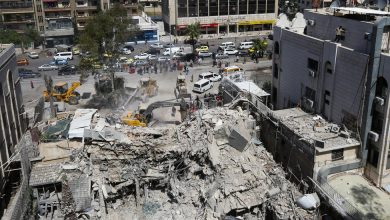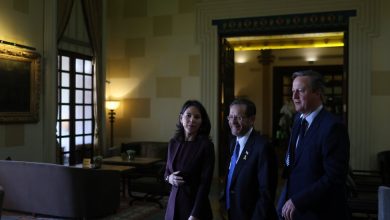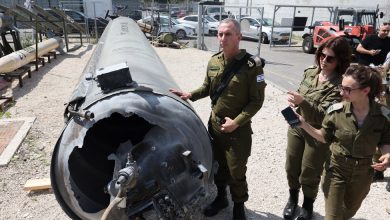Virginia Norwood, ‘Mother’ of Satellite Imaging Systems, Dies at 96

Virginia Norwood, an aerospace pioneer who invented the scanner that has been used to map and study the earth from space for more than 50 years, has died at her home in Topanga, Calif. She was 96.
Her death was announced by the United States Geological Survey, whose Landsat satellite program relies on her invention. Her daughter, Naomi Norwood, said that her mother was found dead in her bed on the morning of March 27.
The Landsat satellites, speeding 438 miles above the surface, orbit the earth every 99 minutes and have captured a complete image of the planet every 16 days since 1972. These images have provided powerful visual evidence of climate change, deforestation and other shifts affecting the planet’s well-being.
Ms. Norwood, a physicist, was the person primarily responsible for designing and championing the scanner that made the program possible. NASA has called her “the mother of Landsat.”
At the dawn of the era of space exploration in the 1950s and ’60s, she was working at Hughes Aircraft Company, developing instruments. One of a small group of women in a male-dominated industry, she stood out more for her acumen.
“She said ‘I was kind of known as the person who could solve impossible problems,’” Naomi Norwood told NASA for a video on its website. “So people would bring things to her, even pieces of other projects.”
In the late 1960s, after NASA’s lunar missions sent back spectacular pictures of Earth, the director of the Geological Survey thought that photographs of the planet from space could help the agency manage land resources. The agency would partner with NASA, which would send satellites into space to take the pictures.
Ms. Norwood, who was part of an advanced design group in the space and communications division at Hughes, canvassed scientists who specialized in agriculture, meteorology, pollution and geology. She concluded that a scanner that recorded multiple spectra of light and energy, like one that had been used for local agricultural observations, could be modified for the planetary project that the Geological Survey and NASA had in mind.
The Geological Survey and NASA planned to use a giant three-camera system designed by RCA, based on television tube technology, that had been used to map the moon. The bulk of the 4,000-pound payload on NASA’s first Landsat satellite was reserved for the RCA equipment.
Ms. Norwood and Hughes were told that their multispectral scanner system, or M.S.S., could be included if it weighed no more than 100 pounds.
Ms. Norwood had to scale back her scanner to record just four bands of energy in the electromagnetic spectrum instead of seven, as she had planned. The scanner also had to be high precision. In her first design, each pixel represented 80 meters.
The device had a 9-by-13-inch mirror that banged back and forth noisily in the scanner 13 times a second. The scientists at the Geological Survey and NASA were skeptical.
A senior engineer from Hughes took the device out on a truck and drove around California to test it and convince the doubters that it would work. It did — spectacularly. Ms. Norwood hung one of the images, of Yosemite National Park’s Half Dome, on the wall of her house for the rest of her life.
The first Landsat blasted into space on July 23, 1972. Two days later, the scanner sent back the first images, of the Ouachita Mountains in Oklahoma; they were astounding. According to a 2021 article in MIT Technology Review, one geologist teared up. Another, who had been skeptical about the scanner, said, “I was so wrong about this. I’m not going to eat crow. Not big enough. I’m going to eat raven.”
The RCA system was supposed to be the primary recording instrument aboard the satellite, and the M.S.S. a secondary experiment.
“But once we looked at the data, the roles switched,” Stan Freden, the Landsat 1 project scientist, said in a NASA report.
The M.S.S. proved not only better, but also more reliable. Two weeks after liftoff, power surges in the RCA camera-based system endangered the satellite and the camera had to be shut down.
Over the next 50 years, new Landsat satellites replaced earlier ones. Ms. Norwood oversaw the development of Landsat 2, 3, 4 and 5. Currently, Landsat 8 and 9 are orbiting the earth, and NASA plans to launch Landsat 10 in 2030. Each generation satellite has added more imaging capabilities but always based on Ms. Norwood’s original concept.
The Landsat program has mapped changes in the planet brought on by climate change and by human actions. They include the near disappearance of the Aral Sea between Kazakhstan and Uzbekistan, the shrinking of the Great Salt Lake in Utah, the evolving shape of the Mississippi Delta and the deforestation and increasing agricultural use of land in Turkey and Brazil.
Virginia Tower was born on Jan. 8, 1927, in Fort Totten, N.Y., to John Vogler and Eleanore (Monroe) Tower. Ms. Tower was a homemaker and also a linguist who spoke nine languages. Mr. Tower was a decorated Army colonel with a master’s degree in physics who eventually taught at Carnegie Tech (now Carnegie Mellon University).
He encouraged Virginia to study math and physics and made her first slide rule with her when she was 9. As a military family, they moved frequently, living in Panama, Oklahoma, and Bermuda, among other places. Virginia attended five high different high schools before graduating as the salutatorian of Germantown High School in Philadelphia.
Her school guidance counselor suggested that she become a librarian, advice that she ignored, instead applying to the Massachusetts Institute of Technology, where she was one of about a dozen women in her entering class.
A day after graduating in 1947, she married Lawrence Norwood, a graduate student who had been her calculus instructor during her third semester. They had three children: Naomi, David and Peter. The marriage ended in divorce, and Ms. Norwood married Maurice Schaeffer, who died in 2010. She is survived by Naomi and Peter; a sister, Barbara; five grandchildren and three great-grandchildren.
After graduating, Ms. Norwood ran into the prejudices then permeating society, according to the MIT and NASA articles. When interviewing at Sikorsky Aircraft, she asked for a salary commensurate with the lowest rank in the civil service, but was told the company would never pay a woman that much.
She withdrew her application at a food lab after she was asked to promise not to get pregnant.
She had three interviews at Remington, the gun manufacturer, in which she outlined how a staff mathematician could improve the company’s operations. The hiring manager called to say that her idea was brilliant, but that the company was going to hire a man instead.
Desperate, she took a job selling women’s blouses at a department store in New Haven, Conn.
Finally she and her husband were hired by the U.S. Army Signal Corps Laboratories in Fort Monmouth, N.J. She worked in the weather radar division, where she designed a radar reflector for weather balloons that could detect previously untraceable winds at 100,000 feet.
She later moved to an antenna group, working on antennas that used microwaves, and designed one that remains classified. In 1953, she and her husband moved to California and she went to work at Sylvania Electronic Defense Labs in Mountain View, where she set up the company’s first antenna lab.
A year later, the couple moved to Los Angeles, where she was hired by Hughes Aircraft’s research and development division, becoming the only woman among the division’s 2,700 employees. In 1957, promoted to lead the microwave group in the company’s missile lab, she became the first woman at Hughes to join the technical staff.
One man, faced with Ms. Norwood as his boss, quit, saying he did not want to work for a woman, the MIT Technology Review article said. He returned several years later asking for a job, but she refused.
In her new role, Ms. Norwood designed the transmitter and receiver for the world’s first communications satellite. A couple of years later, NASA sent a lander called Surveyor to the moon to scout possible landing locations for astronauts. Ms. Norwood’s team designed the equipment the lander used to communicate with ground control.
In the 2020 article on NASA’s website calling her the “mother” of Landsat, Ms. Norwood said she was comfortable with the moniker.
“Yes, I like it, and it’s apt,” she said. “I created it, I birthed it, and I fought for it.”




